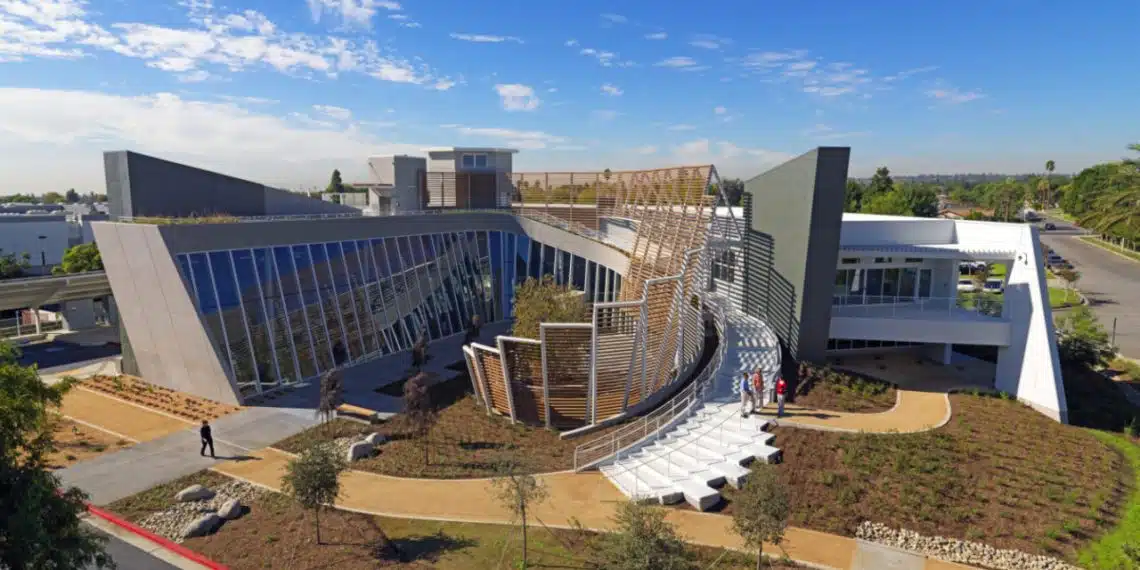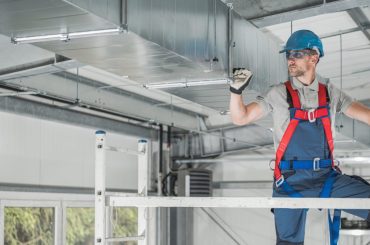Table of Contents
Gone are the days when sustainable construction was merely a niche interest. Today, modern architecture has embraced eco-friendly practices like never before, reshaping the landscape of the build environment. In this paradigm, builders, architects and contractors are increasingly drawn towards materials that offer not only aesthetic appeal but also environmental benefits. Among these, cedar cladding stands out for its natural beauty and sustainability, marking the intersection of ecological responsibility and contemporary design.
With a rising awareness of the ecological impact of construction, the industry is undergoing a transformative shift. Sustainable materials are gaining recognition as essential elements of architectural innovation. The choice of building materials is no longer just about function and durability; it now reflects an ethic of stewardship and a commitment to future generations. Cedar cladding emerges within this narrative as a material that captures the spirit of the age – a blend of tradition and forward-thinking that is helping to drive the industry towards a greener future.
The Benefits and Applications of Cedar Cladding
Cedar, specifically, has become a favoured choice among eco-conscious architects for its numerous advantages. Much of its appeal lies in its exceptional environmental profile; it is a naturally renewable resource with inherent insulative properties that contribute to energy efficiency, making it perfect as a timber cladding choice Due to its unrivalled durability, the wood’s capacity to sequester carbon throughout its long service lifetime further solidifies its position as a leader in sustainable timber cladding options.
The aesthetic versatility of cedar cladding also means that it can enhance virtually any design motif, from rustic charm to minimalist modernity. Its warm, rich tones and distinctive textures add character and depth to any building’s facade. Moreover, the durability and resistance to decay allow for long-lasting structures with minimal maintenance, further reducing its environmental impact over the building’s life cycle.
Beyond the individual properties, cedar’s role in sustainable architecture is substantial. Case studies showcase cedar cladding in a myriad of applications, from weather-resistant exteriors to stylish interior accents. These examples provide a rich tapestry of inspiration, showcasing the material’s ability to meet both the practical demands of construction and the ethical imperatives of environmental stewardship.
Sustainability of Cedar Cladding
Integrating cedar into contemporary architecture goes beyond mere material selection; it reflects a broader pledge to both design innovation and ecological mindfulness. Architects are finding novel ways to incorporate cedar cladding aligning both the structural and ethical dimensions of their projects. For instance, cedar can be used for both the outward appearance and internal structures, providing continuity and natural insulation.
As a versatile material, cedar transcends traditional boundaries, adapting to a variety of design languages. Whether in the creation of a statement piece or as part of the supporting ensemble, cedar cladding has proven its merit in adding value and appeal to properties all over the world. Its adaptability is a testament to its role as not just a cladding material, but as a key component in the narrative of sustainable construction.
Thus, when homeowners choose to implement cedar cladding in their designs, they are investing in more than just a durable and beautiful product; they are participating in a larger movement towards sustainable living. Far from being a fleeting trend, the adoption of materials like cedar is a meaningful step towards creating a greener and more resilient built environment.
Maintenance of Cedar Cladding
While cedar cladding is lauded for its durability and low maintenance, good installation and regular care can extend its life and preserve its natural beauty. Homeowners and building managers should consider the environmental conditions cedar will face and tailor maintenance routines accordingly. Typically, a gentle cleaning once or twice a year is sufficient to maintain the wood’s appearance, and, importantly, it avoids the need for harsh chemicals.
The sustainability of cedar extends to its lifecycle, with the ability to last for decades if properly cared for. This makes it not only environmentally responsible but also cost-effective in the long run. Using products certified by responsible forestry practices such as FSC ensures that cedar remains an asset to both the building and the environment. A long-term view of maintenance – one that considers not just the immediate appearance but also the ongoing ecological impact – reinforces cedar’s position as a sustainable choice. Bear in mind that as with any timber cladding, Cedar will slowly weather to a silver-grey colour if left untreated.
Best practices for cedar maintenance center around eco-friendly practices. Stains and finishes derived from natural oils or those with low volatile organic compound (VOC) content can protect cedar while being kind to the planet. Preserving cedar’s colour without sacrificing ecological concerns demonstrates a thoughtful approach to modern living, where sustainability is as much a part of maintenance as it is of initial construction.
Embracing Cedar for a Sustainable Future
In the quest for sustainability, cedar cladding has emerged as a beacon of eco-friendly design, offering an embodiment of modern architectural values fused with environmental consciousness. As this article has explored, integrating sustainable materials like cedar into construction is more than a trend; it’s a commitment to the future of our planet. Architects, builders, and homeowners are increasingly recognising the importance of choosing materials that support a healthy environment without compromising on beauty or functionality.
To embrace modern architecture with sustainable materials is to participate in a movement toward resilience and responsibility. Through the thoughtful use of cedar cladding and other similar materials, we have the power to shape the built environment into a legacy that will stand the test of time, both aesthetically and ecologically. It is with this vision of innovation and sustainability that we can forge a path towards construction practices that honour our heritage as custodians of the Earth.





